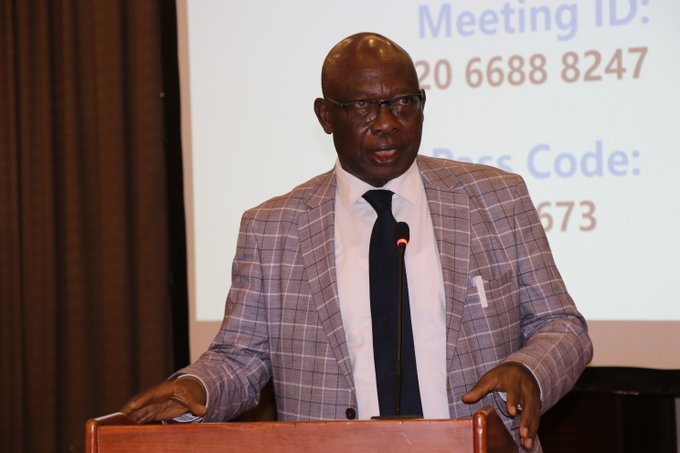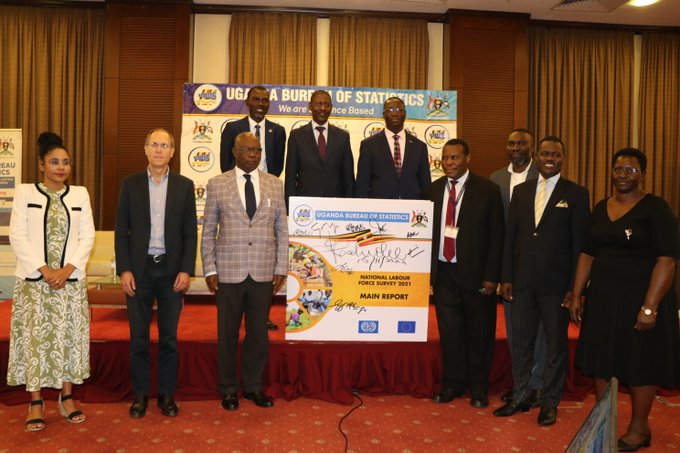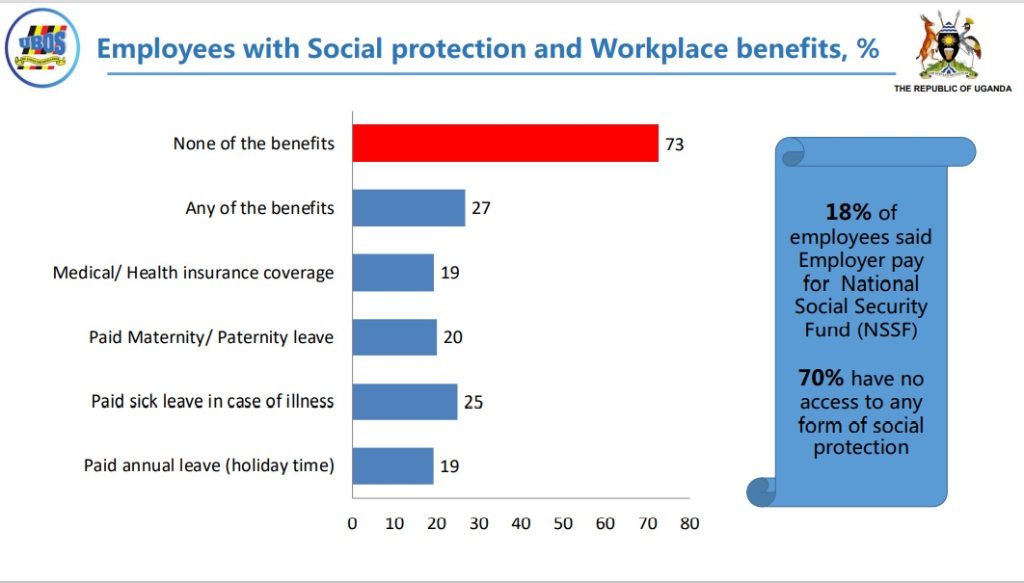More than half of Uganda’s working population earns Shs200,000 in monthly wages, according to the 2021 National Labour Force Survey.
The report was presented by the Director of Population and Social Statistics at the Uganda Bureau of Statistics (UBOS), Vincent Fred Ssenono, at Serena Hotel Kampala on Wednesday, November 16, 2022.
He defined the population in employment as all those of working age who, during one week preceding the date of the interview, were engaged in any activity to produce goods or provide services for use by others in exchange for pay or profit.
While releasing the findings of the survey, Michael Sijje Ogen, a Principal Statistician at UBOS, said the median monthly cash earnings for persons in paid employment on the main job is Shs200,000.
“In-kind and cash average monthly earnings were UGX 250,000,” he stated.
In statistics and probability theory, the median is the value separating the higher half from the lower half of a data sample, a population, or a probability distribution. For a data set, it may be thought of as “the middle” value.
According to Ogen, the wages paid after long hours of work have remained low for the majority of working Ugandans.
According to the findings, both men and women spend an average of 7 daily actual hours on their main job.
Education mismatch
About 45% of those working have an education that matches their job, 11% are overqualified, 43% are under-educated and 1% are not stated.
Only 18% of employees said the employer pays for the National Social Security Fund (NSSF) while 70% have no access to any form of social protection.
Job Satisfaction status
About 77% expressed satisfaction with their job, 12% were neither satisfied nor unsatisfied and 11% were not satisfied with their job.
40% of those in subsistence agriculture, 21% in care work and 39% in other subsistence work are working without pay.
Other findings
The employment to population ratio of males is 52% and females 34% while the national stands at 43%. The proportion of informal employment (excluding agriculture) is 88%.
The unemployment rate is at 12%, an increase from 9% in 2019/20 with Youth unemployment at (17%).
About 12 million Ugandans (50%) of the working-age population were outside the labour force.
41% of youth (18-30 years) were not in education, employment or training, 21% of the working-age population were in unpaid care work and 24% of youth (18-30 years) had transited to employment.
Reactions
UBOS Deputy Executive Director, Godfrey Nabongo, said the statistical indicators are all-inclusive to increase usability and appreciation of statistics. “We shall continue identifying the gaps to avail requisite indicators. We shall disseminate these findings to the regional level,” he noted.
He highlighted the challenge associated with the point of entry at work for ladies where they are not properly catered for.
Hon. Dominick Gidudu Mafabi, the Minister of State Elderly, who launched the report said Uganda has one of the largest useful populations in the world which is both a challenge and an opportunity.

“We need to manage this population dividend through requisite public investments, and it can’t be done with a labour force producing under peak levels,” he pointed out.
Speaking at the launch, the European Union Head of Governance, Nicolas Gonze, conveyed the EU’s support.
He described the report as “a key document providing data for employment policy, job creation and socio-economic development.”
Aggrey David Kibenge, Permanent Secretary at the Ministry of Gender, Labour and Social Development, asked the attendees to take in the information entailed in the report and generate a policy developing gender.
For issues of gender discrimination, he said there is a committee advocating for breastfeeding guidelines at work.

Douglas Opio, Executive Director of the Federation of Uganda Employers (FUE), emphasized the digital readiness of the workforce and underutilization of the Labor force.
He pointed out the decent utilisation of Sustainable Development Goal 8 (about “decent work and economic growth”) and advocated for the right application of “leave policy” to the employees, especially maternal leave.
“Low wages should be addressed as we launch this National Labor Survey to enhance business continuity.”

Wandera Martin, Director for Labour, Employment and Occupational Safety and Health, said there are numerous government programmes aimed at implementing and fostering economic growth mostly through agriculture.
He commended the Parish Development Model programme, highlighted the importance of labour inspection and depreciated the act of child labour.













